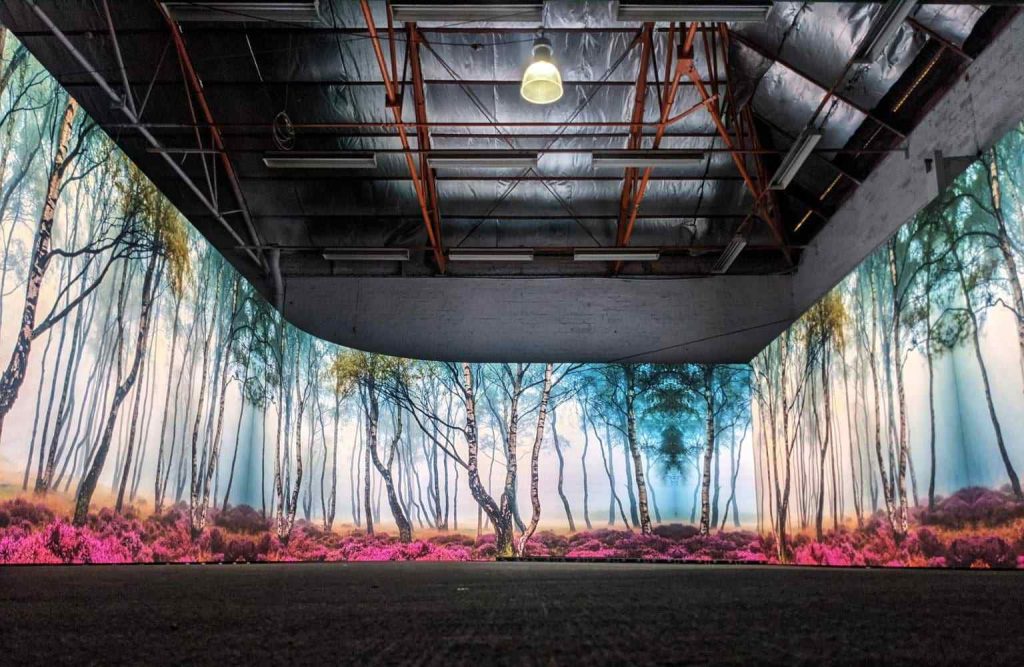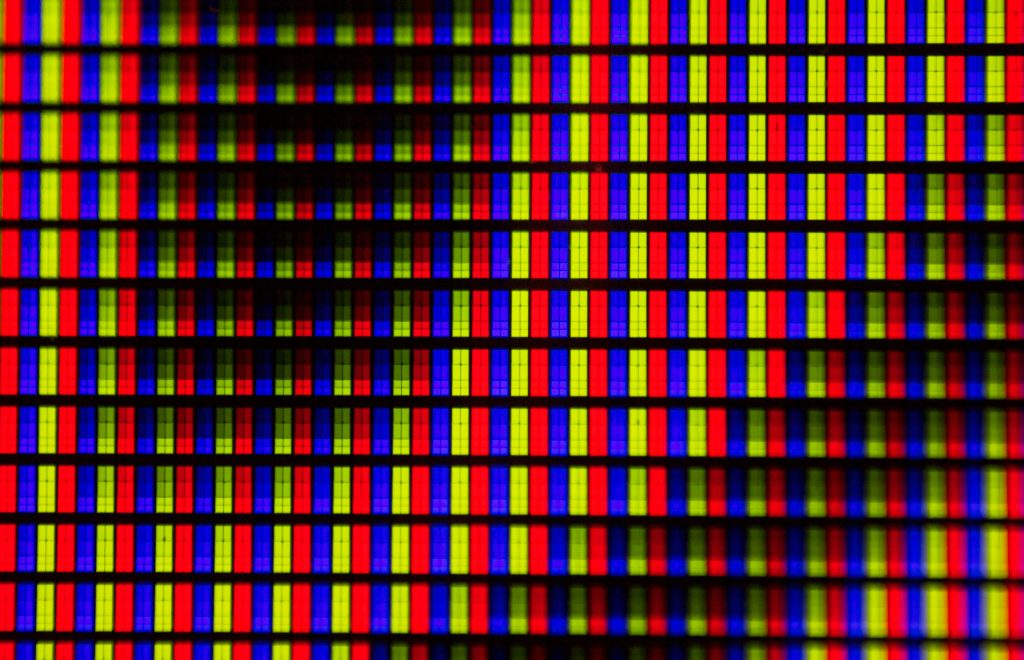LED Display Types The Complete Buying Guide 2024
Recommended reading
Why Are More Control Rooms Switching to COB Fine Pitch LED Displays?
Recommended reading+86 755-33691736inquiry@dicolorled.comNo.13 Huiye Road ,Tangjia Community,Fenghuang Street, Guangming District, Shenzhen,China 518103 Shenzhen Dicolor Intelligent Technology(Dongguang) Co., Ltd Gate No.4-5, Building A-17,...
2025 LED Display Industry Trends: What’s Next for the Future of Displays?
Recommended reading+86 755-33691736inquiry@dicolorled.comNo.13 Huiye Road ,Tangjia Community,Fenghuang Street, Guangming District, Shenzhen,China 518103 Shenzhen Dicolor Intelligent Technology(Dongguang) Co., Ltd Gate No.4-5, Building A-17,...
How to Maximize Brand Exposure with Outdoor LED Advertising? MP Series Case Study in Urban Business Districts
Recommended reading+86 755-33691736inquiry@dicolorled.comNo.13 Huiye Road ,Tangjia Community,Fenghuang Street, Guangming District, Shenzhen,China 518103 Shenzhen Dicolor Intelligent Technology(Dongguang) Co., Ltd Gate No.4-5, Building A-17,...
System Requirements for XR and VP Virtual Production
Recommended reading+86 755-33691736inquiry@dicolorled.comNo.13 Huiye Road ,Tangjia Community,Fenghuang Street, Guangming District, Shenzhen,China 518103 Shenzhen Dicolor Intelligent Technology(Dongguang) Co., Ltd Gate No.4-5, Building A-17,...
Customer Service
+86 755-33691736
inquiry@dicolorled.com
Headquarters Address
No.13 Huiye Road ,Tangjia Community,Fenghuang Street, Guangming District, Shenzhen,China 518103
Shenzhen Dicolor Intelligent Technology(Dongguang) Co., Ltd Gate No.4-5, Building A-17, No.780 Xiecao Road , Xiegang Town, Dongguan, Guangdong, China
Light Emitting Diode technology is a method of producing light commonly used in various types of displays. LEDs are small, energy-efficient light sources that emit light when an electric current passes through them. This technology has revolutionized the lighting and display industries due to its efficiency, longevity, and the vibrant colors it can produce.
Choosing the right LED display type is crucial because it impacts the display’s effectiveness, energy consumption, longevity, and suitability for its intended purpose. Different types of LED displays are designed for various applications, such as outdoor advertising, indoor signage, stage performances, or personal use. Factors to consider when selecting an LED display include resolution, brightness, viewing distance, environment (indoor or outdoor), and the display’s size and shape.
Overview of LED Display Screens
LED display screens are visual display technology that uses an array of light-emitting diodes (LEDs) as pixels for a video display. Their brightness allows them to be used outdoors in store signs and billboards, and they are also commonly used in destination signs on public transport vehicles. LED panels can also be used indoors in a variety of settings. The core technology behind these displays is the LED (Light Emitting Diode), a semiconductor light source that emits light when current flows through it. This technology is known for its efficiency, longevity, and ability to produce vibrant colors. Unlike traditional display methods, LEDs can be individually controlled for brightness and color, allowing for dynamic, high-resolution displays suitable for a wide range of applications from small-scale personal devices to large public screens.

Different Types of LED Displays
LED displays have revolutionized the way we view digital content. Here, we explore five different types of LED displays, each offering unique benefits and applications.
OLED (Organic Light Emitting Diode) Displays
OLED technology stands out for its ability to produce light from organic compounds. Each pixel in an OLED display is made of these organic materials that emit light when an electric current passes through them. This allows for incredibly thin and flexible displays. The most significant advantage of OLEDs is their ability to display deep blacks and high contrast ratios, as each pixel can be turned on or off independently. This feature makes them ideal for high-end smartphones, TVs, and monitors where image quality is paramount.
LCD (Liquid Crystal Display) with LED Backlight
LCDs are a prevalent display technology used in everything from TVs and monitors to smartphone screens. In an LCD, the liquid crystals do not emit light directly. Instead, the display uses a backlight made of LEDs (Light Emitting Diodes) to illuminate the pixels. This LED backlighting can be either edge-lit or full-array. Edge-lit models have LEDs along the edges of the screen, while full-array models have LEDs distributed across the entire back of the display, allowing for better control of brightness and contrast.
Direct-View LED Displays
Unlike LCDs with LED backlights, direct-view LED displays use LEDs as the actual pixels of the screen. Each LED emits light directly and acts as a tiny pixel. This technology is commonly used in large outdoor screens, like those seen in sports stadiums or digital billboards. Direct-view LED displays are highly durable and visible even in direct sunlight, making them ideal for outdoor applications. They also offer excellent color and brightness, though they tend to be more expensive and have lower resolution compared to other types.
Mini-LED Displays
Mini-LED technology is a newer advancement in the field. It uses thousands of tiny LEDs, much smaller than those in traditional LED backlit displays. These mini-LEDs form the backlight for LCD panels. The key advantage of mini-LED displays is their ability to provide finer control over local dimming zones, which enhances contrast and enables deeper blacks. This technology is often found in high-end televisions and monitors where picture quality is a critical factor.
Micro-LED Displays
Micro-LEDs take the concept of Mini-LEDs a step further. Each micro-LED acts as its own individual pixel. These displays offer excellent brightness, color gamut, and energy efficiency. Since they don’t require a backlight, micro-LED displays can be incredibly thin and potentially flexible. They combine the best features of OLEDs (like deep blacks and high contrast) and LED displays (like brightness and durability). However, as of now, micro-LED technology is relatively expensive and challenging to manufacture, especially for high-resolution screens.
Each of these LED display types has its unique strengths, making them suitable for various applications, from personal gadgets to large-scale advertising and entertainment. The choice among them largely depends on specific needs like image quality, size, flexibility, and cost.
OLED vs. LCD vs. Direct-View vs. Mini-LED vs. Micro-LED
In the realm of display technologies, several types stand out: OLED, LCD, Direct-View LED, Mini-LED, and Micro-LED. Each has its unique characteristics, advantages, and limitations.
1. OLED Displays
Pros:
High Contrast and Deep Blacks: OLED panels emit their own light, enabling true blacks as individual pixels can be completely turned off.
Wide Viewing Angles: The image quality remains consistent even when viewed from sharp angles.
Fast Response Time: Ideal for fast-moving content like sports and video games.
Thin and Flexible Designs: Allows for curved and bendable screens.
Cons:
Risk of Burn-In: Static images over long periods can cause permanent image retention.
Cost: Generally more expensive to produce than LCDs.
Brightness: While improving, OLEDs typically don’t get as bright as some LCDs.
2. LCD Displays
Advantages:
Cost-Effectiveness: More affordable, especially for larger sizes.
No Burn-In Issues: Better for static image display over long periods.
Brightness: Can achieve higher brightness levels, which is good for well-lit environments.
Limitations:
Lower Contrast Ratios: Backlight means it’s hard to achieve true black.
Narrower Viewing Angles: Image quality can degrade at wide angles.
Slower Response Time: Can lead to motion blur in fast-moving images.
3. Direct-View LED Displays
Benefits:
Excellent Brightness and Contrast: Direct-view LEDs are very bright and offer high contrast.
Durability and Lifespan: Generally longer-lasting than LCD and OLED.
Scalability: Can be built to extremely large sizes, ideal for public displays or advertising.
Drawbacks:
Pixel Density: Generally lower resolution at smaller sizes.
Size and Weight: Tend to be bulkier and heavier.
Cost: Can be expensive, especially in high-resolution configurations.
4. Mini-LED Displays
Capabilities:
Improved Local Dimming: Thousands of small LEDs allow for better control of lighting and contrast.
High Brightness Levels: Excellent for HDR content.
Less Prone to Burn-In: Compared to OLED.
Challenges:
Cost: More expensive than traditional LCDs.
Limited Black Levels: Despite improvements, still lag behind OLEDs in achieving true black.
5. Micro-LED Displays
Future Potential:
Combines OLED and LED Strengths: Offers deep blacks, high brightness, and no burn-in risk.
Energy Efficiency: More efficient than OLED and LCD.
Long Lifespan: Expected to outlast OLEDs and LCDs.
Current Limitations:
Manufacturing Complexity and Cost: Currently very expensive and challenging to produce, especially in smaller screen sizes.
Early in Development: Still not widely available in consumer products.
Factors to Consider Before Buying
When purchasing an LED display for your business, there are several critical factors to consider to ensure you get the most suitable display for your needs:
Resolution and Pixel Density
The resolution, which is the number of pixels on the screen, determines how clear and sharp the image will be. Higher resolutions mean more pixels and finer details. Pixel density, measured in pixels per inch (PPI), also affects image clarity, especially when viewed up close.
Size and Aspect Ratio
The size of the display should be chosen based on the viewing distance and the content you intend to show. Larger displays are better for viewing from a distance. Aspect ratio, the ratio of width to height, is crucial for compatibility with the content you plan to display. Common aspect ratios include 16:9, which is standard for most content, and 4:3 for more specialized applications.
Brightness and Contrast Ratio
Brightness, measured in nits, is essential for readability in various lighting conditions, especially if the display will be used outdoors. A higher contrast ratio, the difference between the darkest and brightest parts of the image, leads to a more vivid and appealing picture.
Color Reproduction and Gamut
Good color reproduction ensures that the colors are accurate and vibrant. The color gamut, the range of colors the screen can display, should be wide enough to cover the colors used in your content for the most effective presentation.
Refresh Rate and Response Time
The refresh rate, how often the image updates per second, should be high to avoid flicker, especially in video content. Response time, the speed at which a pixel can change color, affects how well the display handles fast-moving images without blurring.
Viewing Angles
Consider how the display looks from different angles. Wider viewing angles are crucial for areas where viewers will see the screen from various positions.
Durability and Lifespan
The build quality affects how well the display will withstand weather and other environmental factors if it’s an outdoor display. Also, consider the expected lifespan of the LED modules.
Connectivity Options
Ensure the display has the necessary ports and interfaces to connect with your current systems and devices. HDMI, DisplayPort, USB, and network connectivity are common requirements.
Energy Efficiency
LED displays vary in their power consumption. More energy-efficient models can reduce operational costs significantly over time, so it’s important to consider the energy rating and
power needs of the display.
By carefully considering these factors, you can choose an LED display that not only meets your business’s current needs but also serves you well into the future.
Budget Considerations
Budget considerations are a crucial aspect of selecting an LED display, especially since these displays come in various types, each with its own price range. When exploring the market, potential buyers will encounter a spectrum of options, from high-end displays with advanced features to more economical choices that still offer good quality.
For those seeking cost-effective solutions without compromising on quality, the Dicolor rental LED displays are a noteworthy option. These displays are designed to offer a balance between affordability and performance, making them a practical choice for events, exhibitions, and temporary installations. They typically feature good resolution and durable build quality, ensuring that users get good value for their investment.
In the context of value for money, it’s essential to look beyond the initial purchase price. Factors like energy efficiency, durability, maintenance costs, and the longevity of the display play a pivotal role in determining the total cost of ownership. A display that might seem expensive upfront could turn out to be more cost-effective in the long run, owing to lower operational and maintenance expenses. Therefore, it’s advisable to consider all these aspects when making a budget-conscious decision on an LED display.
Conclusion
This comprehensive buying guide on LED display types emphasizes the importance of understanding the various options available, taking into account key factors such as display resolution, size, viewing angles, brightness, durability, and energy efficiency. With technological advancements, consumers now have access to a wider range of products, including traditional LED panels, flexible LED displays, and high-definition microLED screens. It’s crucial to match the type of LED display to the specific needs of the application, whether for personal use, commercial advertising, or public information display. Attention should also be given to the manufacturer’s reputation, warranty, and customer support. By carefully evaluating these factors, buyers can make an informed decision that ensures they get the best value and performance from their LED display investment in 2024.
Dicolor is a global provider of LED displays. We show premium technology with cutting-edge technology and advanced innovations, providing LED display products, solutions,and services worldwide for rental stage events, ads billboards, commercial display, etc.


